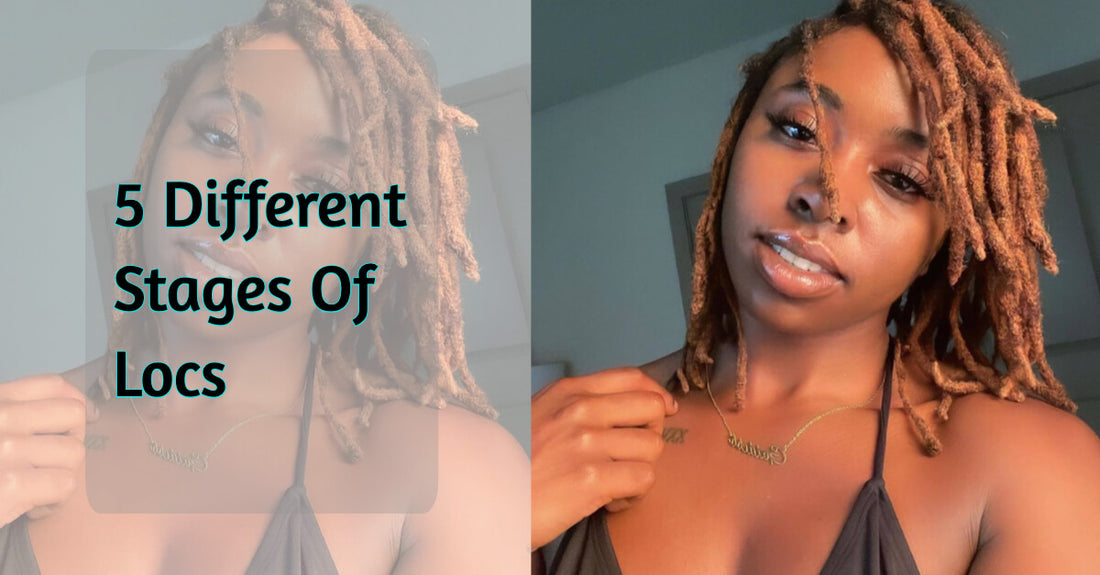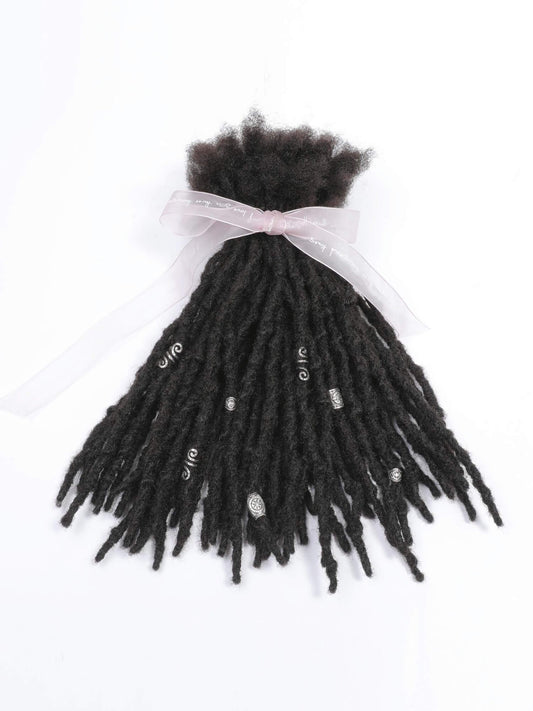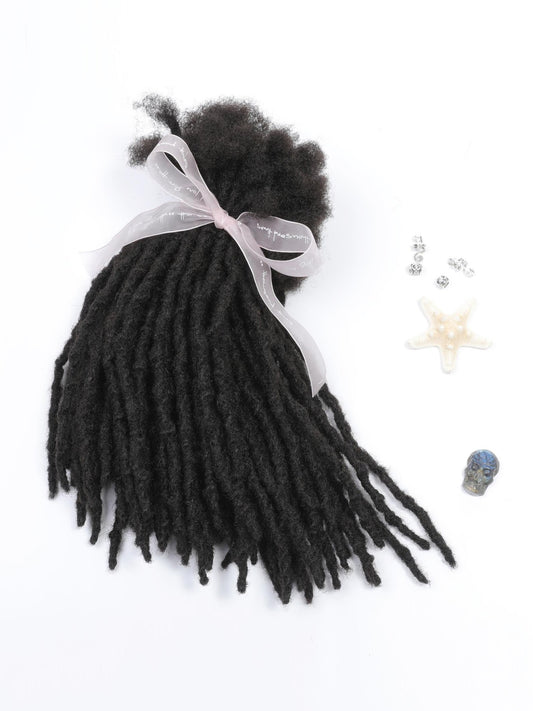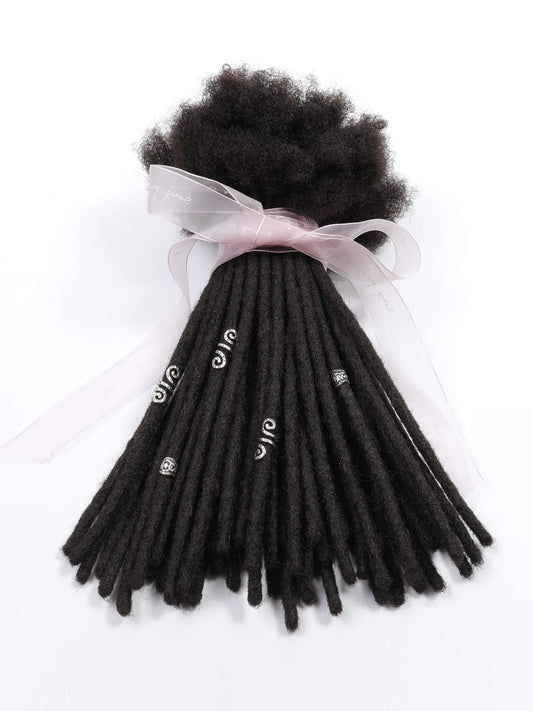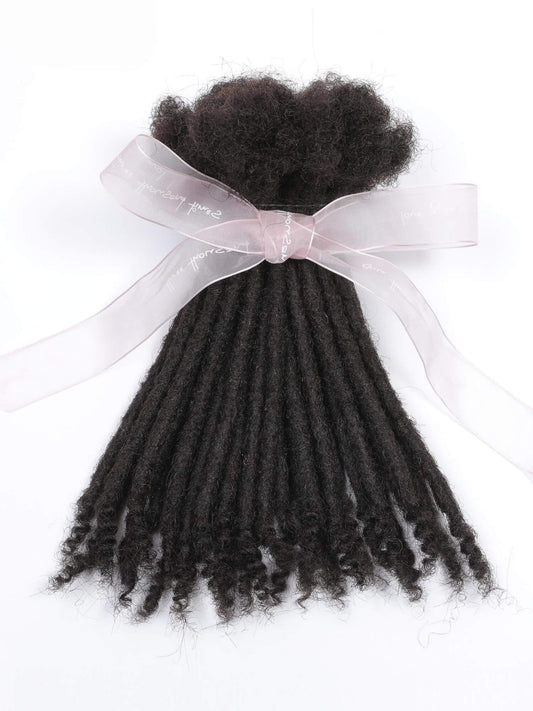This article will share the five stages of locs that help gets a professional look. Continue reading to learn more about how the locs develop in each stage. What is loc budding? How long does each locs stage last? How to care for your locs in a particular stage, and much more. Let’s first dive into the introduction.
5 Stages of Locs Journey
The dreadlocks make the hairstyle that you can’t get overnight. It is a protective hairstyle in which the hair develops into the locs over time. With five different loc stages and a lot of patience and hair maintenance, you finally get your favorite look after two years. Wondering what are the various stages of the locs? If you’ve not started your locs yet, we recommend you complete your part of research by reading and gaining knowledge about different locs looks, locs installation techniques, loc hairstyles, and locs stages. It will help you choose the right locking pattern, locs type, dreadlocks maintenance tips and more.
Locs journey needs patience and maintenance from starter locs to developing into long, mature and thick locs. Moreover, it requires an active lifestyle that fits best for taking care of the locs daily. Here are the five stages of the locs that you will be facing during your locs journey:
Stage 1: Starter stage
The starter stage is the first stage of locs after diving into the dreadlocks hairstyle. Typically, in this stage, the locs are known as starter locs or baby locs. It is one of the complex stages in which the locs unravel quickly after washing and give a fluffy look. But, the primary thing to remember at this step is that it is just the beginning and things settle after some time. The locs don’t remain the same after this stage. Instead, they develop and grow gaining the perfect shape and size with time.
When installing or starting locs, the first step allows you to switch from one type of locs to other. The best way is to decide what type of locs you want, like the traditional locs, microlocs, sisterlocs or the other. It also allows you to choose freeform, two-twist strands, comb coiled, palm rolled, interlocked or any other locs installation method. Ensure the size of your locs, pattern and length of your locs before starting the locs to keep things convenient.
In the beginning, the locs are small and nascent, depending on how you started. They may look fragile, frizz out, or shrink up. At this stage, mostly people quit. But, don’t lose heart or freak out because this is just the first step, and your locs start getting into better shape after this stage.
How long does the starter stage last?
The starter stage lasts from a few starting months to 6 months on average. The starter stage length differentiates on various factors such as the hair type, locs type, and how you care for your locs in the starting days.
Stage 2: Budding stage / Budding locs
The next stage after the starter stage is the budding stage, also known as sprouting stage. The budding stage is characterized by the visible bumps on your locs, unruliness, and frizziness. At this stage, the locs look unkept at times but remember that the locs develop, and it’s all part of the process.
In the first stage, unraveling is the main issue to keep the locs twisted to enter the next step. Till this stage, you will need to incorporate retwisting, a major part of your hair care routine. At this stage, you will notice that your locs don’t unravel after washing, giving you a moment of relief. Although the locs don’t unravel at this stage, retwisting is needed to keep the new growth into the locs. It may look fizzy and fluffy, but this is how it is.
Now a quick question, how to fix budding locs? Retwisting will aid you in keeping the locs reasonable in shape and keep the parting sections original. Now, how you perform the retwisting depends on you. You can either get the retwisting done by the hair professional or hair loctician or learn to do it at home. Further, the retwisting techniques also vary. Some prefer palm rolling or interlocking their roots at home, while others prefer professional services using hair-twisting tools.
How long does budding locs last?
Budding locs last from six months to 12 months on average. At this stage, you will feel the budding at the ends, middle, or closer to the roots. There is no hard or fast rule determining how long this period can be. But, you can make it easier by a proper hair care routine, fixing new growth, and keeping your locs hydrated. If you have longer locs, the budding stage may get longer, from six months to a year.
How to care for budding locs?
Caring for the budding locs is no different from the starter locs. The only difference is the unraveling in the first stage that you don’t need to worry about in the budding stage. To keep your locs clean, you will have to create a routine. We all know how tempting it is to retwist the new hair growth but be careful as overdoing it can cause hair breakage or thinning of the hair. Further, it can cause scalp pain, traction alopecia, abrasions and other hair issues.
Additionally, it is important to prevent buildup by keeping the locs clean. At the same place, keeping the locs well-moisturized is another thing to manage. Budding locs after a month may show sprouting that can be settled with retwisting. The hair locticians suggest retwisting the locs after two months and using the residue-free shampoo for washing budding locs. Make sure your locs look nice and clean by following a regular loc maintenance routine.
Stage 3: Teenage stage
The third dreadlocks stage is the teenage stage. In this stage of the locs journey, the locs act like teenagers and feel awkward. This stage is also known as the ugly stage among all the stages. Are you wondering why this stage is named so? Because the locs can become rebellious and be seen as awkward due to their in-between length. Nevertheless, the locs start taking the form and develop into proper locs with some length, diameter and potential. All these characteristics visualize your locs potential.
The teenage stage will keep you occupied with how you look. It is one of the challenging moments that you will face because the locs look awkward at this adage. Don’t give up. Instead, try to rick the teenage locs with pretty styles such as Bantu knots, high buns, braids or ponytails if your locs are in length.
How long does the teenage stage last?
The teenage locs stage lasts from months 12 to 18 on average, but still, there is no definite amount of time. Some individuals experience the budding stage longer, so the teenage stage can be shorter for them. The thing is to take care of your locs with a routine to get to the next step soon.
Stage 4: Mature stage
The fourth stage on the way to the perfect locs is the mature stage. In this stage, you are finally able to get the mature locs. After three stages of consistency, you have finally made it. After reaching this stage, you will notice that your locs are more cylindrical and require no reform or retwists. The mature stage is the favorite of many as it finally develops the locs into something that looks smoother, comforter, and cylindrical. So, your locs maintenance routine will also become more manageable compared to the budding locs and other locs stages.
It is essential to take extra care of the locs at this stage as the locs develop into proper shape after this stage. Try to keep your locs clean, conditioned, and well motorized. The locs become firm and hard after the budding and teenage stages. So, use essential hair oils to keep the locs soft and mature.
How long does the mature stage last?
The mature stage of the locs usually starts from month 15 and lasts till month 18. The time frame may vary for individuals depending upon their hair type, locs design, and hair routine.
Stage 5: Final stage
After 4 stages of locs, the last stage finally starts. This is also known as the rooted stage or adult stage of the locs. It occurs from 18-21 months of the locs journey. In this stage, the locs are fully matured and grown. The locs will keep flourishing with some simple yet consistent hair care routine. Just remember to cleanse your locs and keep them well-moisturized with the essential hair oils. Although it doesn’t matter at which stage you’re in, these are the basic locs care practices.
In the final stage, the locs will have a slight skinner look and more weight on the scalp. So, if you feel the extra burden, you can cut them short. Further, if you think extra hair tension, stress or pain in the scalp due to the locs, the best thing is to consult your loctician.
Additionally, the hair care routine will take a lot of time in several hair washing and drying steps. Long, thick and robust locs take time to dry after a wash. In addition, you may face difficulty sleeping with the long adult locs. So, keep them covered at night with bonnets, durags, or satin caps while sleeping.
How long does the final stage last?
The rooted stage initiates in the 18th month and continues indefinitely. Once you hit this stage, you are free to carry them in either style, color or look.
To sum up, the five stages of locs help shape the hair into locs. Depending upon your style and comfort, you are free to choose the type of locs. The first stage allows you to change your decision. Budding locs develop enthusiasm, teenage locs add some awkwardness, and mature locs result after consistency. And, finally, your favorite final stage of rocking the locs. So, try to be consistent with the hair care routine and get the locs without quitting at the first stage.
